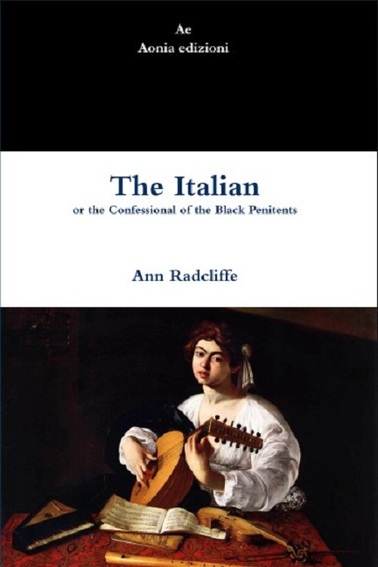The Italian, or the Confessional of the Black Penitents (1797) is a Gothic novel written by the English author Ann Radcliffe. It is the last book Radcliffe published during her lifetime (although she did go on to write the novel Gaston de Blondeville, which appeared posthumously in 1826). The Italian has a dark, mysterious and somber tone, and concerns the themes of love, devotion and persecution by the Holy Inquisition. It also deals with issues prevalent at the time of the French Revolution, such as religion, aristocracy and nationality. Radcliffe's renowned use of veiled imagery is considered to have reached its height of sophistication and complexity in The Italian; concealment and disguise are central motifs of the novel. In line with late 18th-century sensibility and its parallel fetishisation of the sublime and the sentimentally pastoral, the heightened emotional states of Radcliffe's characters are often reflected through the pathetic fallacy. The novel is noted for its extremely effective antagonist, Father Schedoni.
| Libro Italia € 7,99 (lo compro qui) E-book Italia € 0,89 (lo compro qui) Amazon Italia € 11,99 (lo compro qui) | Libro USA $ 12,99 (lo compro qui) E-book USA $ 0,99 (lo compro qui) E-book Germania € 0,89 (lo compro qui) |
| Libro Germania € 12,49 (lo compro qui) Libro Regno Unito £ 9,99 (lo compro qui) E-book Regno Unito £ 0,77 (lo compro qui) | Libro Francia € 12,99 (lo compro qui) E-book Giappone $ 0,99 (lo compro qui) Libro Canada $ 0,99 (lo compro qui) |
About the year 1764, some English travellers in Italy, during one of their excursions in the environs of Naples, happened to stop before the portico of the Santa Maria del Pianto, a church belonging to a very ancient convent of the order of the Black Penitents. The magnificence of this portico, though impaired by time, excited so much admiration, that the travellers were curious to survey the structure to which it belonged, and with this intention they ascended the marble steps that led to it.
Within the shade of the portico, a person with folded arms, and eyes directed towards the ground, was pacing behind the pillars the whole extent of the pavement, and was apparently so engaged by his own thoughts, as not to observe that strangers were approaching. He turned, however, suddenly, as if startled by the sound of steps, and then, without further pausing, glided to a door that opened into the church, and disappeared.
There was something too extraordinary in the figure of this man, and too singular in his conduct, to pass unnoticed by the visitors. He was of a tall thin figure, bending forward from the shoulders; of a sallow complexion, and harsh features, and had an eye, which, as it looked up from the cloke that muffled the lower part of his countenance, seemed expressive of uncommon ferocity.




